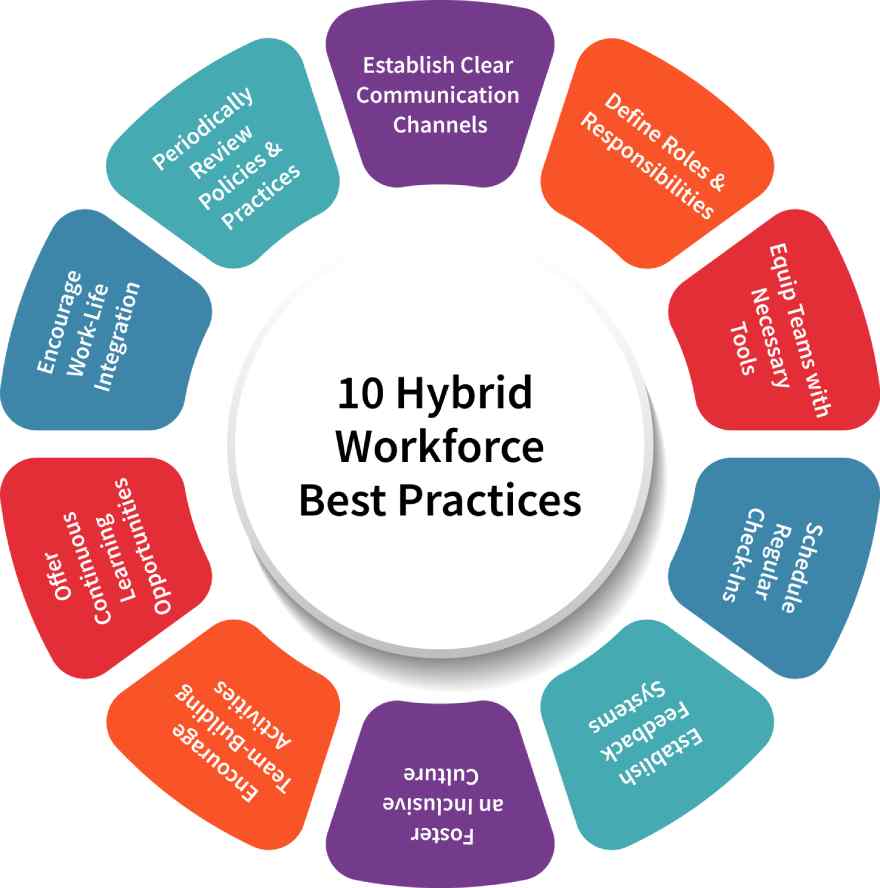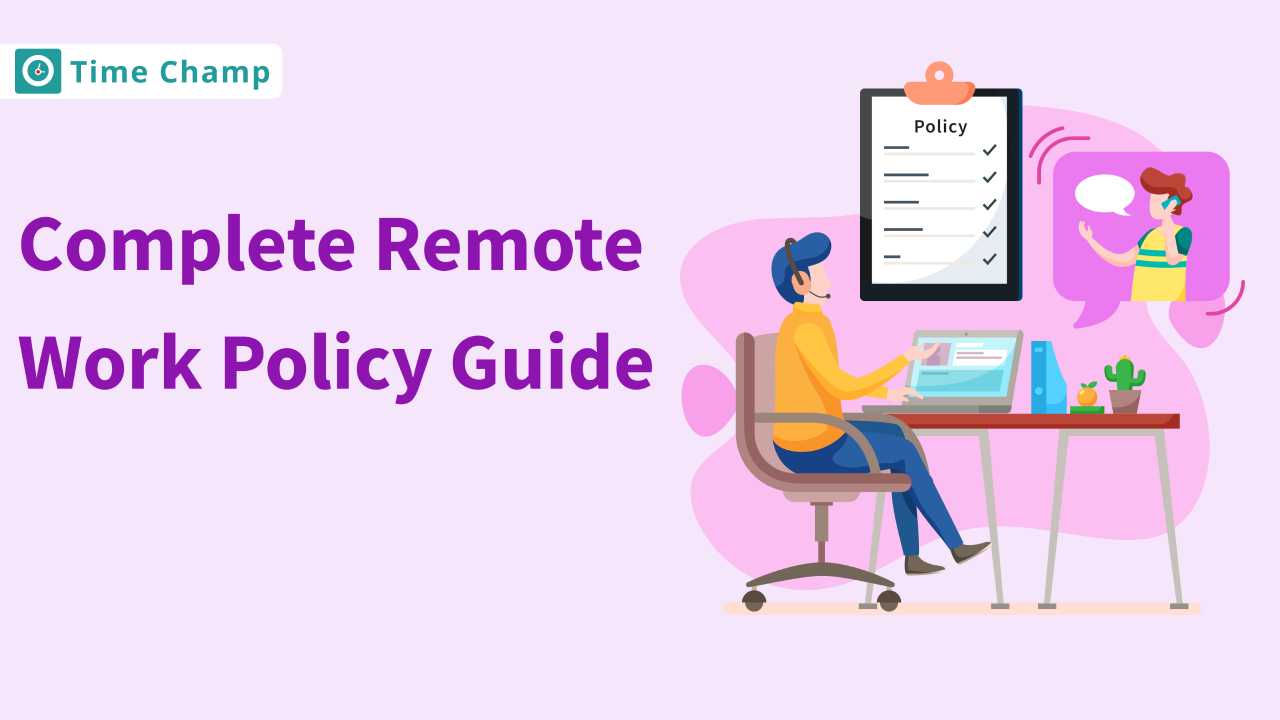Managing a hybrid workforce is exciting but challenging. As companies increasingly adopt this flexible model, you may find yourself navigating new dynamics and expectations with your team. It’s essential to create a setup where both in-office and remote team members can thrive equally. In this blog, you’ll learn 10 smart hybrid workforce best practices to foster collaboration, boost productivity, and drive success with your hybrid team. If you want to increase team morale, foster trust, or enhance communication, these strategies will help you make the most of your hybrid workforce. Let’s get started!
What Challenges Does the Hybrid Workforce Encounter?
Here are some of the key challenges that a hybrid workforce encounters.
1. Communication Gaps:
In a hybrid setting, the team members are spread out, and communication becomes challenging. Because face-to-face dialogue is often absent, there is the risk of miscommunication, and some crucial updates may also be missed by those working remotely. Compared to office-going members, remote workers usually feel disconnected. Thus, structured communication is needed so that each member will know what is needed.
2. Technology Issues:
Your hybrid team relies on reliable technology to work together. Problems like slow internet, outdated software, or hardware failures can interrupt team members’ workflow. For example, video calls may become challenging when there is lag or poor audio, which hampers communication. It should be pretty straightforward for remote workers to receive IT support with technical problems resolved shortly after they emerge. Streamlined support processes, such as dedicated helpdesk resources or simply chat options, are likely to reduce downtime, maintain productivity, and ensure everything runs fairly smoothly.
3. Maintaining Team Cohesion:
Building a united team culture is much more challenging with remote workers. At times, remote employees may feel isolated or out of touch with their coworkers, which hinders teamwork. Such scenarios can be filled by developing in-person and virtual events that establish an inclusive culture.
4. Work-Life Balance Struggles:
Hybrid work provides flexibility but blurs the separation between work and personal time. Remote employees often end up working longer hours, whereas those in the office have trouble stepping away from work even after leaving. Some members find it difficult to balance work with other responsibilities; therefore, proper demarcation and separation of work hours will help them maintain a healthy balance.
5. Tracking Performance and Productivity:
In a hybrid environment, measuring performance is difficult because you cannot see the work being done. Therefore, you need tools that allow you to track productivity in a respectful manner, so you can view each contribution without invading people’s privacy.
10 Best Practices for a Hybrid Workforce

Following are the 10 best hybrid workforce best practices.
1. Establish Clear Communication Channels:
Communication is key for a successful hybrid workforce. Initiate by identifying the best tools for your team, like Slack for instant messaging or Zoom for video calls. Make sure everybody knows what each tool is for, like emails for formal updates, chats for quick questions, and so on. Set expectations for responsiveness, so clearly communicate about when people can expect a reply. This will avoid misunderstandings and ensure everyone is aligned on goals and tasks.
2. Define Roles and Responsibilities:
Clear definitions of roles and responsibilities streamline the workflow and give team members a sense of purpose. So, each one needs to know exactly what their specific role is and how that contributes to the overall goal. It’s possible through the use of a shared document or some kind of project management tool, which is easy to update for transparency and collaboration. The team needs to be reminded of their roles at regular meetings-especially on new projects to become engaged. In effect, this approach not only clarifies expectations for your team members but also encourages teamwork, giving individuals ownership over their responsibilities, ultimately leading to increased motivation.
3. Equip Teams with Necessary Tools:
Provide the right resources for your team to ensure success. Consider the technologies they may need, such as laptops, software tools, and collaboration tools like Time Champ, Trello, or Asana. Also, remember other security measures will be necessary when processing personal information and perhaps working from a distant location. Train your team on the proper use of these technologies. Equipped with the right resources, collaboration will be smooth and productive, whether they are working in an office or elsewhere.
4. Schedule Regular Check-Ins:
Regular meetings assist in keeping your team moving forward and working through potential problems. Also, schedule weekly or biweekly meetings where team members can share their updates and discuss obstacles. Use this time to celebrate wins and support each other through challenges. Form a safe environment for open discussion, so team members feel comfortable sharing their thoughts. Encouraging bonding among team members is very important in a hybrid model to keep everyone connected.
5. Establish Feedback Systems:
A structured feedback system encourages continuous improvement. Regular methods of feedback like surveys and one-on-one discussions, enable team members to openly share their opinions. This enables them to identify areas for improvement and also assures team members that their opinions are valued. Acting on the feedback received will give clear evidence of your commitment to forming an even better working environment.
6. Foster an Inclusive Culture:
An inclusive culture makes your team members feel valued whether they are working from the office or from home. Encourage diverse perspectives by actively involving all members of your team in discussions. Make an effort to recognize the contributions of everyone and develop practices that support inclusivity, like flexible meeting times. When the team members feel included, they will collaborate and strengthen your overall team performance.
7. Encourage Team-Building Activities:
Team-building activities will be quite important for building solid connections within a hybrid team. Scheduled regular events that enable the members of your team to connect, whether it be online or in person. Try online quizzes or casual coffee breaks, to encourage your team members to actively participate and share their interests to build connections outside of work.
8. Offer Continuous Learning Opportunities:
Support continuous learning because it is important to develop your team! Encourage them to take virtual courses, join webinars, or attend workshops that align with their professional goals. Whenever possible, set aside a budget for learning resources and build opportunities for your team members to share their new knowledge. Investing in employee growth displays real care for their careers, leading to higher job satisfaction and loyalty—a win for both your team and the organization.
9. Encourage Work-Life Integration:
Implement work-life integration for your team so they will find their balance in life. Set limits that permit the working and personal lives of every employee. This can be done through flexible hours, regular breaks, or allowing time off for personal commitments. Support their needs to create a more productive workforce. When your employees feel that they can balance their work and life, they will deliver their best.
10. Periodically Review Policies and Practices:
Finally, regularly reviewing your policies and practices is very important to adapting to the hybrid work environment. Ask the members of your team for input and schedule time to evaluate the performance of the present model. Stay open to implementing changes based on their feedback. Being proactive in improving the work experience increases morale and productivity.
Conclusion
Building a strong hybrid workforce takes work, but with these best practices, you can help your employees thrive, whether they’re in the office or working from home. Start with clear communication, define roles and provide the necessary tools for everyone to fulfill their work. Regular check-ins and feedback keep them motivated and engaged. Foster an inclusive culture that ensures every employee feels valued. Encourage team building, continuous learning, and work-life integration to boost morale and productivity. Review your policies from time to time to adapt to the needs of your team to improve their work environment. Start implementing these strategies to create an effective hybrid team!
Enhance your hybrid workforce productivity with Time Champ—start your success journey today!
Signup for FreeBook DemoFrequently Asked Questions
Key challenges include a lack of communication, issues with technology, maintaining cohesion in the team, work-life balance, monitoring performance, increasing productivity, and earning trust. Each of these challenges calls for definite strategies to be effectively addressed.
Encourage diverse perspectives and actively include all team members in discussions. Recognize that everyone contributes, whether they are in a location or not, and promote inclusivity by allowing for flexible meeting times and other supportive practices.
Hybrid teams bond well through virtual activities, such as quizzes, creative challenges, and casual online meet-ups. Where possible, in-person events should also be used to help bond teammates. The goal is to try and find opportunities for teammates to engage and get better acquainted outside of their everyday work tasks.
Implement work-life integration approaches. This includes flexible hours, regular breaks, and some time off for personal commitments. Clear boundary setting will therefore help employees better balance work with private life.
Monitoring productivity can be done using respectful and non-invasive tracking tools. Also, regular check-ins and project updates provide insight into the general direction of work for everyone without violating privacy.







